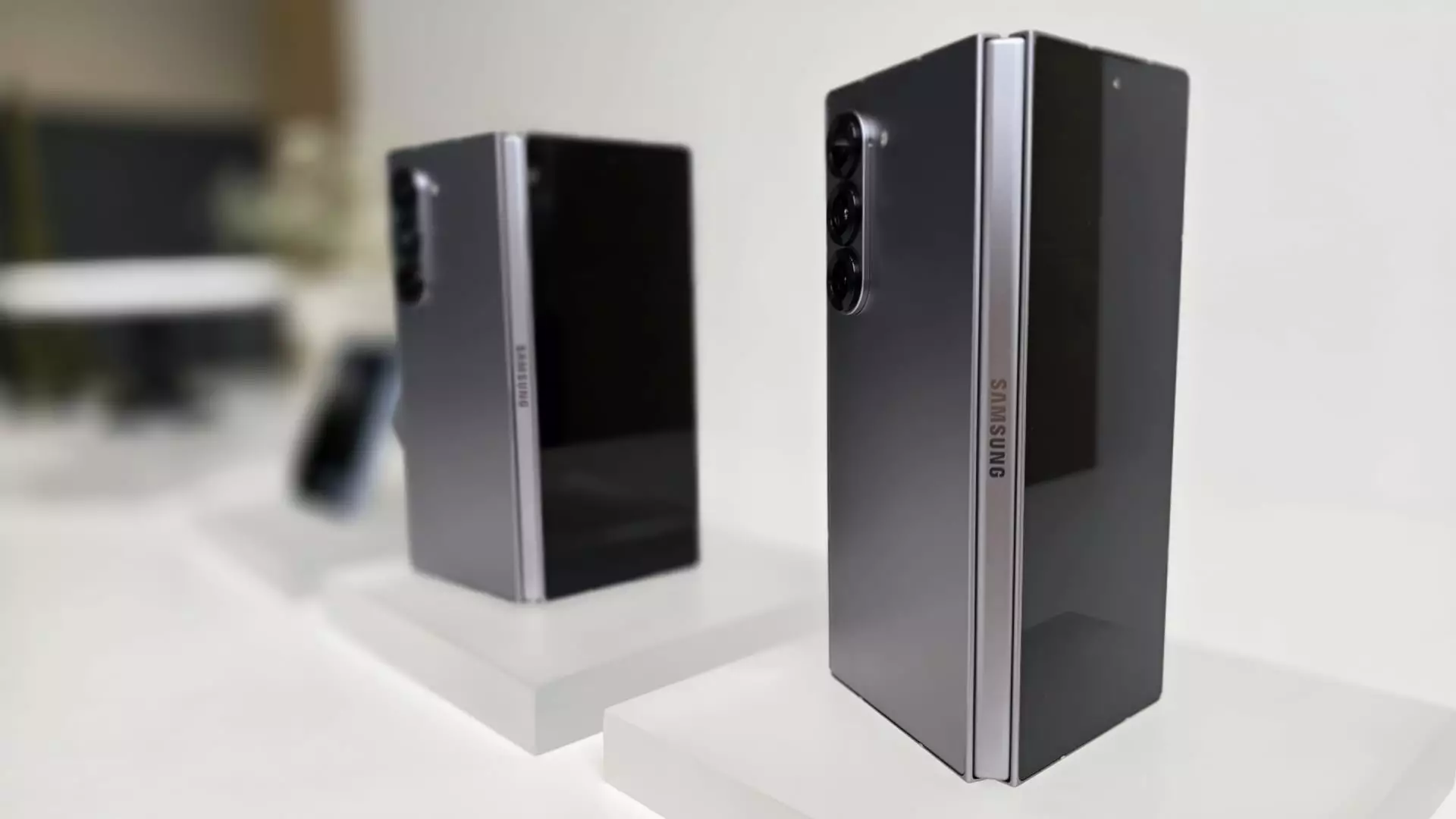As Samsung gears up for its anticipated launch of a sleeker iteration of its flagship Galaxy Z foldable series, it’s imperative to recognize the fierce competition that looms, particularly from Chinese manufacturers. Companies like Honor and Oppo have effectively leveraged design and innovation to produce foldables that not only challenge Samsung’s stature but also appeal to a consumer base increasingly demanding refinement and functionality. The foldable landscape has evolved drastically since Samsung launched its first device in 2019, transitioning from a novel concept to an arena where the stakes are high and the demand for excellence is unwavering.
The need for a thinner foldable device is not merely a trend; it’s a market demand. Technology analyst Ben Wood from CCS Insight highlights that consumers are unwilling to compromise on thickness and weight just to enjoy the benefits of a foldable screen. This stark reality underscores a critical shift in consumer expectations, necessitating that Samsung not only matches but exceeds the innovations offered by its challengers. Slimmer designs from competitors have become a badge of honor, serving as both a marketing strategy and a tangible point of difference that consumers are beginning to recognize.
Breaking Down the Numbers: Samsung vs. the Competitors
To truly appreciate the challenge that Samsung faces, let’s delve into the specifics of the competing foldable models. The Galaxy Z Fold6, measuring a substantial 12.1 millimeters when closed, exemplifies the traditional bulk associated with early foldable phones. In juxtaposition, Oppo’s Find N5 boasts a surprisingly lithe 8.93 millimeters, while Honor’s Magic V3 is not far behind at 9.2 millimeters. These figures are more than just numbers; they represent a mindset shift where less is decidedly more.
As consumers become more discerning, the significance of weight cannot be overstated. The Z Fold6’s weight of 239 grams is nearly insurmountable when compared to Honor and Oppo’s models, which are both lighter and more portable. This reality is a double-edged sword for Samsung; they have established themselves as pioneers in the foldable space, yet the emerging narrative is one of urgency to innovate further—before being left behind in the race for consumer favor.
The Future of Foldables: An Uphill Journey
Despite these advances, the foldable phone market remains a relatively small fragment of the smartphone landscape, predicted to account for just 2% of overall sales this year. This statistic suggests a concerning undercurrent; even as brands continue to invest in thinner, sleeker designs, the unwavering question remains: Do consumers actually want foldable phones? Without a fundamental shift in consumer perception, Samsung’s upcoming launch may merely be an exercise in futility.
The challenge for Samsung extends beyond crafting a sleek device; it lies in changing the narrative surrounding foldables. Wood points out the precarious nature of consumer acceptance, wherein the distinction between traditional smartphones and foldables may still not resonate. If consumers do not view foldables as an essential innovation, then thinner models may simply be a cosmetic fix rather than a transformative leap forward.
Apple: The Wild Card in the Foldable Equation
Adding complexity to the current foldable narrative is the anticipated entry of Apple into the foldable arena, with rumors swirling about a possible launch of a folding iPhone next year. Apple’s reputation for quality and innovation presents a formidable challenge not only for Samsung but for the entire smartphone market. If Apple successfully enters this space with a compelling offering, it could destabilize the entire competitive landscape.
The prospect of Apple swirling into the mix means Samsung must not only focus on being thinner but also on delivering a cohesive user experience that emphasizes the added value of foldable technology. As Samsung prepares for its upcoming launch, the reality is stark: thinner alone may not suffice. The brand must encapsulate innovation, design, and a compelling reason for consumers to reconsider foldables altogether.
In a market where consumer needs and desires are ever-changing, it is this blend of style and substance that will ultimately define the future of foldable technology, and Samsung stands at the precipice of that critical evolution.

